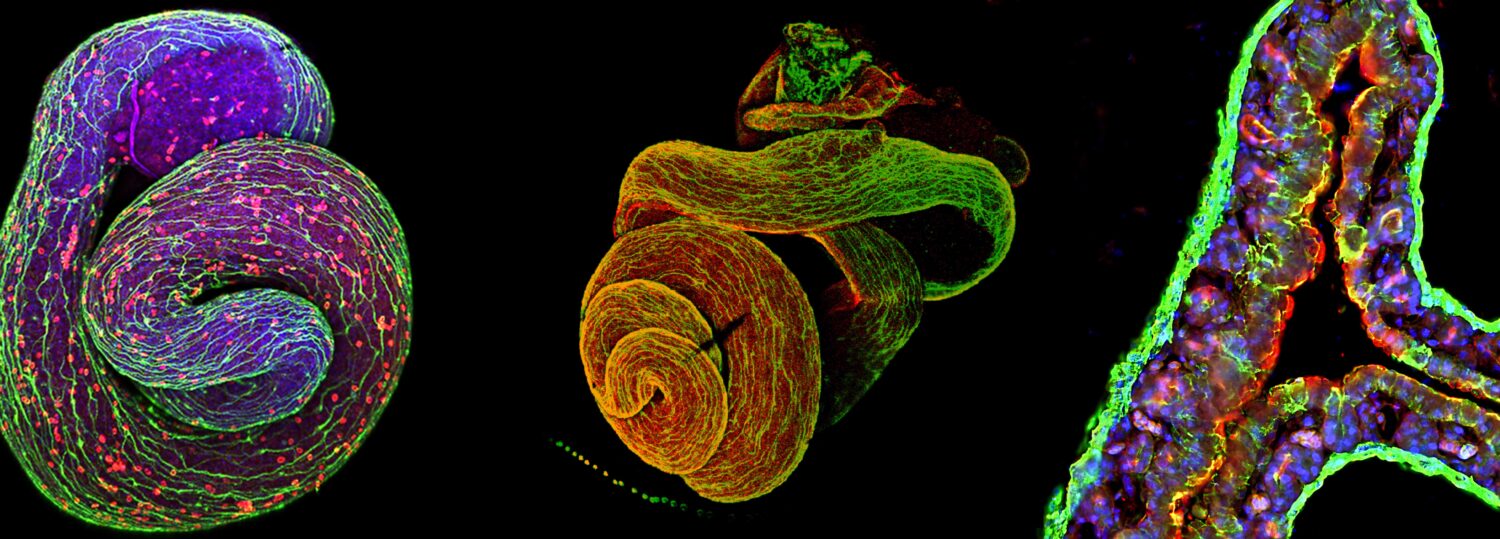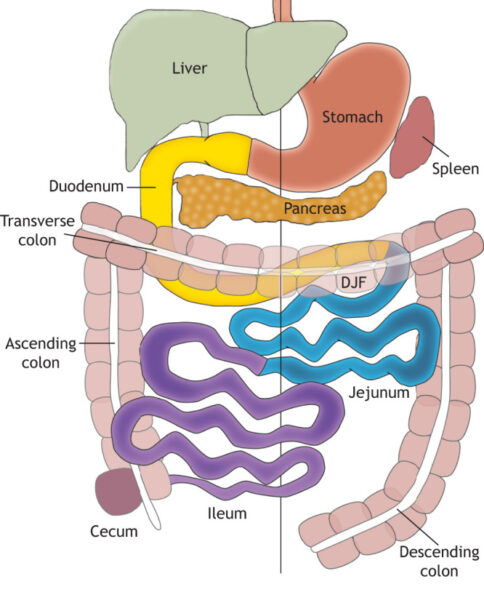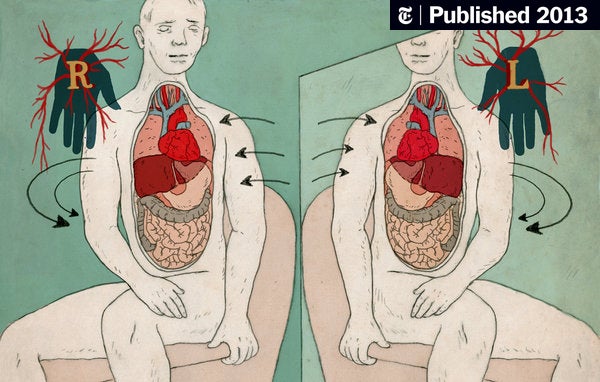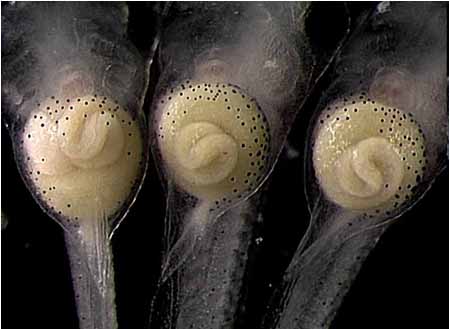
Research Areas

Our lab investigates the complex process of left-right asymmetric organ morphogenesis. We are currently elucidating the cellular and molecular events that shape the asymmetrical anatomy of the digestive organs using both in vivo and in silico modeling, as well as genetic data from human birth defect patients.
Stomach Curvature
The familiar J-shape of the stomach is a simple, but highly evolutionarily-conserved left-right asymmetry that is necessary for normal digestive physiology. Using frog (Xenopus) and mouse embryos, we showed that this organ’s leftward curvature is shaped by asymmetrical rearrangement of the stomach’s inner endoderm-derived epithelial cells, which impels preferential thinning and outgrowth of the left gastric wall.
Read more: Stomach curvature is generated by left-right asymmetric gut morphogenesis.
Transcriptomic analyses of the left and right stomach walls, using the extra-large embryos of the Budgett’s frog, revealed many genes that are expressed left-right asymmetrically in the contralateral sides of the curving organ, including the transcription factor Sim2, which is expressed only in the left stomach endoderm and is required for the rearrangements that drive curvature.
Read more: Single-minded 2 is required for left-right asymmetric stomach morphogenesis.
Computational Modeling
We are now collaborating with a mathematician (Sharon Lubkin) and a physicist (Julio Belmonte) to develop multi-scale computational models of stomach development. These interdisciplinary studies are allowing us to determine how cell and tissue asymmetries generate the biomechanical forces necessary to shape proper geometric curvature in our physical universe.
Intestine rotation
The vertebrate intestine normally rotates in a counter-clockwise direction. Intestinal malrotation occurs in 1 in 500 births and can lead to severe digestive complications and even death. Interestingly, late-stage exposure of Xenopus embryos to the widely-used herbicide atrazine (ATR) perturbs the cellular events necessary for normal gut elongation, resulting in displacement and clockwise reversal of intestine coiling. Cell and molecular analyses suggest that ATR causes metabolic imbalance during development, thus revealing novel roles for metabolism in gut elongation and rotation. This work has implications for the potential contribution of metabolic insults and/or inadequate gut lengthening in the etiology of a common birth defect.
Read more: Developmental regulation of cellular metabolism is required for intestinal elongation and rotation.
ScienceNews article: Messed-up metabolism during development may lead guts to coil the wrong way
Human Birth Defects
We are also using Xenopus to validate laterality-related birth defects in other organs.
Read more:Rare variants in CAPN2 increase risk for isolated hypoplastic left heart syndrome.



